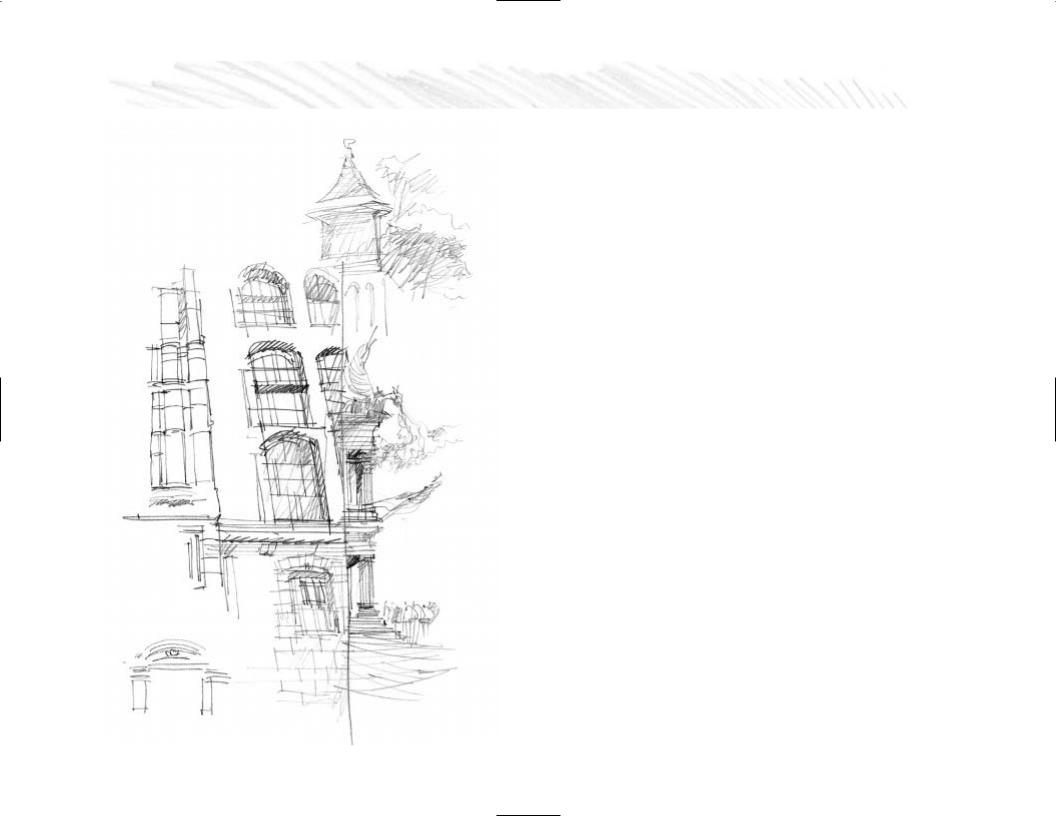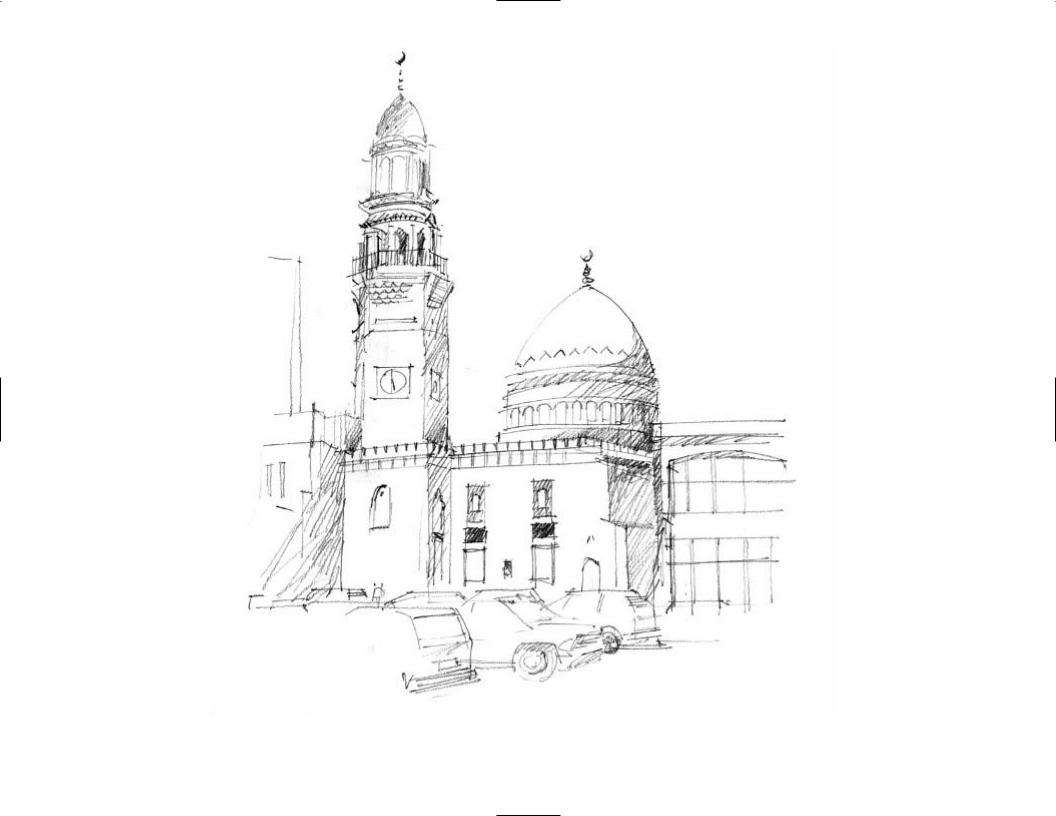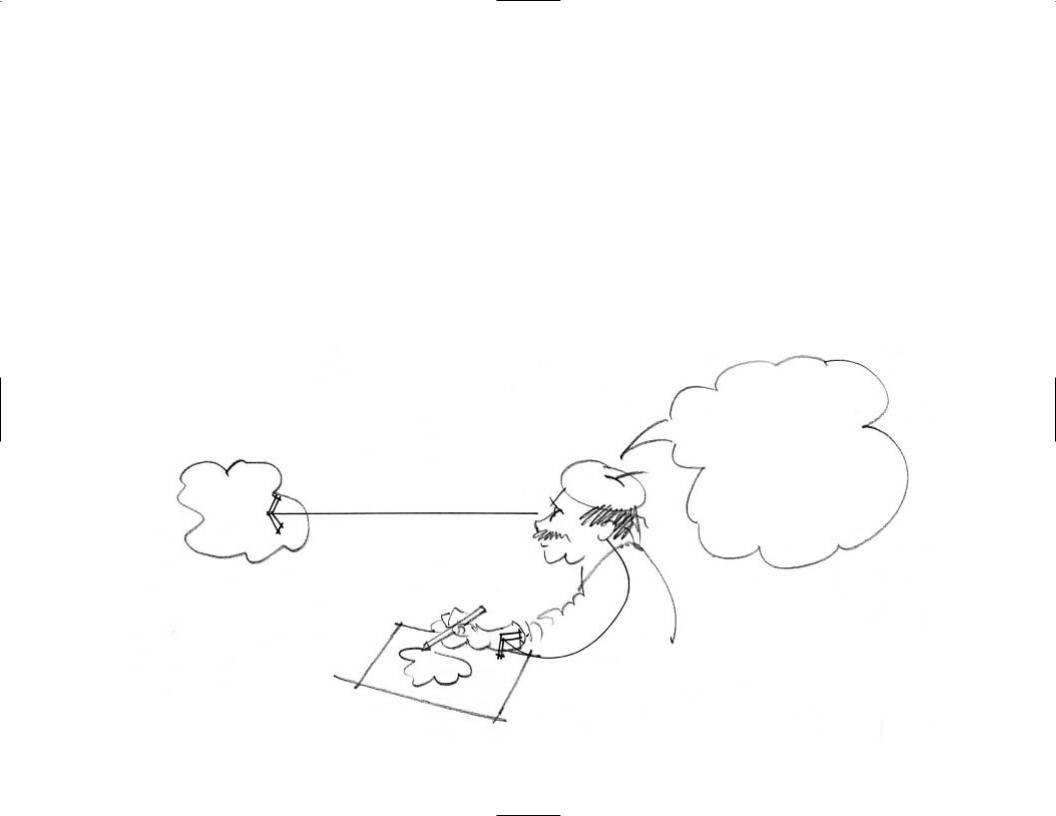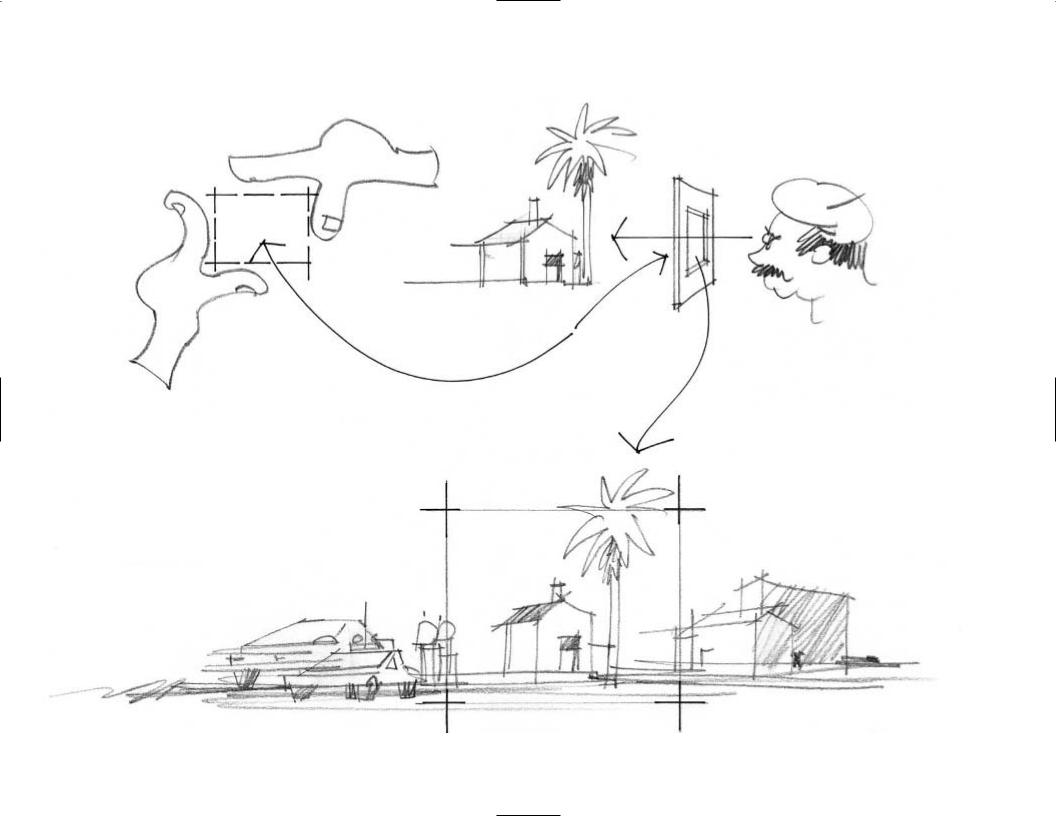
- •CONTENTS
- •PREFACE
- •Pencils
- •Papers
- •Accessories
- •Holding the Pencil
- •Pressure
- •Movement of the Hand
- •Lines and Strokes
- •Introduction
- •Observation and Recording
- •Landscape Sketching
- •Trees
- •Trees in the Foreground
- •Trees in the Background
- •Landforms
- •Water
- •Architecture
- •Sketching the Cityscape
- •SKETCHING FROM MEMORY
- •EXAMPLES
- •INDEX

SKETCHING 4
Introduction
The ultimate goal of sketching is to graphically interpret the image correctly. Although the manner of interpretation and presentation is an individual matter (and every artist has his or her ways of expressing it), the final outcome of a sketch is often governed by some agreeable standards. The sketch must have some degree of realism and the subject of interpretation must be somewhat recognizable. For example, on the simplistic level, a sketched tree ought to look like a tree and not a person. On the more advanced level, an old tree should not look like a young sapling. The trunk and the bark should somehow reveal its age. A house with a stone facade should be drawn so that the subtle differences in the joints and mortar can be revealed and highlighted.
A page from the sketchbook
37

Mosque in Bahrain; regular #2/HB pencil
38

LIFE SKETCHING
Object
Observation and Recording
In order to correctly interpret the image that we are attempting to sketch, we must spend time observing it carefully. Careful observation is a very important first step in the making of a good sketch. Observation must be keen and sharp. Repeated observation and recording are required to truly understand the subject. Sometimes measurements are taken just to make sure that the proper relationship is correctly portrayed. Landscape sketching (and particularly the sketching of trees) provides one of the best vehicles to demonstrate the importance of observation and recording. Measurements and recordings have an amazing benefit for designers because these correct and properly proportioned images can become the visual data bank from which they can later derive inspiration and ideas for future work.
|
• |
See |
|
• |
Identify |
|
• |
Isolate |
Seeing |
• |
Simplify |
• |
Translate |
Pencil
Sketching
The Sketch
39

The size of the picture frame is at the discretion of the artist.
The picture frame (same as picture frame in composition) can be the paper itself.
THE IMPORTANCE OF THE PICTURE FRAME
The picture frame is a hypothetical frame between the object and the artist.
The picture frame is used to isolate the object of interest.
40
